The Nordic Swans complete their 50th Year
01. Aug. 2006
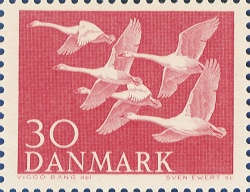
Nordic Cohesion
The idea of a Nordic stamp with five flying swans as the common motif was bred by Foreningen Norden [the Norden Association] in a letter to the five Nordic Postal Administrations already in 1951. At the con-ference of the Nordic Postal Association in March the same year the consensus was to accede to the idea, but of practical reasons it could only be ac-complished later.
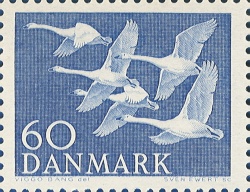
On one hand, in order to obtain a certain quality and uniformity the individual countries should agree to have the stamps of all five countries produced by the same printing house, and on the other hand, the characteristics of the individual countries' stamps should be maintained as far as possible. Moreover, it was considered necessary that all member countries consulted their respective gov-ernments about their view on the matter.
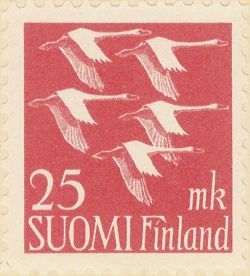
In short, the question went into committee, but as the governments of the countries also approved the idea, it was agreed later that year that the composi-tion of the stamp should be decided on basis of evaluation of a drawing made by a chosen artist from each country, Denmark, Finland, Iceland, Nor-way, and Sweden.
The Nordic Swans
The Swan motif emanated from a poem from 1946 by Hans Hartvig Seedorff Pedersen titled "Svanerne fra Norden" [The Swans from the Nordic Countries], which is a tribute to the free community in the five countries each symbolized by a swan.
At the conference of the Nordic Postal Association in July 1953 drafts for a stamp were ready from the Dane Viggo Bang, the Finn Signe Hammarsten-Janson, The Norwegian Johannes Haukland and the Swede Mark Sylvan. Iceland participated with an illustration to the poem by artist Jón Stefánsson. However, the delegates wanted to make their deci-sion only after having seen sample proofs of the size of the stamp. The proofs should be made by the Swedish stamp printing house, but they were not finished before the next conference in September 1954.
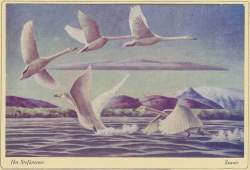
It was decided to choose the Danish contribution and that the stamps (two from each country) should be ready for delivery from the now chosen common Swedish stamp printing house during second half of 1956. As well proofs as stamps were engraved by Swedish chief engraver Sven Ewert.
The Edition
On 1st October 1956, the postal administrations of the five Nordic countries announced at the same time that "in order to accentuate the Nordic cohe-sion and the importance of the Nordic cooperation in various fields" they were going to "issue some special stamps with common motif on the Nordic Countries' Day, 30th October1956". Each country issued the stamps with two values in red and blue colours respectively.
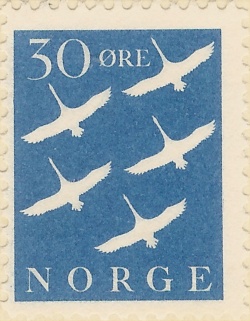
The Nordic countries have issued stamps with common motifs on three later occasions - in 1969 (Viking ships from a rock carving), in 1973 (The Nordic House in Reykjavik), and in 1977 (Water-lilies in pure water - environmental collaboration).
After this the Nordic postal services changed the premisses. From 1980 onwards common Nordic stamps have been issued every three years fea-turing individual, national motifs related to a com-mon theme, in 1980 "Earlier Applied Art", in 1983 "Tourism", and so on. The latest common Nordic stamp edition is "Nordic Mythology" from 2004, and the Faroe Islands, Greenland, and the Aland Is-lands have also participated in the stamp commu-nity through several years.
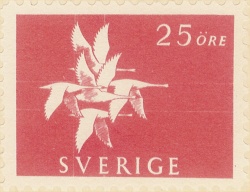
See "The Nordic Swans" from 1956 and a caval-cade of later editions of common Nordic stamps in the Stamp Cabinet on the 3rd floor from 24th Octo-ber 2006.
This article may be copied or quoted with MuseumsPosten, Post & Tele Museum as source.
Comment this article
Only serious and factual comments will be published.